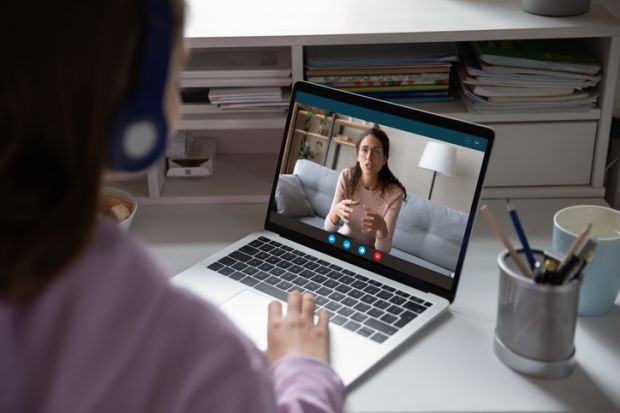The brighter spotlight that’s been placed on online learning by the pandemic has also focused my attention on its principal weakness: graduation rates in most online learning programmes are lower – sometimes much lower – than in conventional face-to-face education.
I call this difference the “distance education deficit” (DED), and a clear example of this comes in the international programmes of the University of London, where I used to work. There, identical courses are presented in two ways – one with local face-to-face teaching, which has a graduation rate of about 62 per cent, and one purely online, with a graduation rate of about 16 per cent, a DED of 46 percentage points.
The UK’s national average graduation rate is about 80 per cent, but it might be fairer to compare online rates with the UK’s part-time student graduation rate of 35 per cent. Many other online universities have similar graduation rates to the University of London, in the teens and early 20s, although hardly any publish them.
But why does this deficit occur? One answer is inherent in the way universities say they are doing “online learning”. As Gilbert Ryle might have said, that’s a “category error”; what universities are doing is online “teaching”. It’s the students who are doing the online learning – and apparently not always very well. As Etienne Wenger writes: “Learning and teaching are not inherently linked. Much learning takes place without teaching, and indeed much teaching takes place without learning.”
The principal problem is that much effort in online education goes into developing more and more techie ways of teaching – learning analytics, artificial intelligence, virtual reality and so on − without necessarily looking at how successful such teaching makes students.
THE Campus: points to consider when personal tutoring remotely
A report by the Organisation for Economic Cooperation and Development last year, Resourcing Higher Education, cautioned that “systematic evidence about the cost effects of digitalising courses…is limited and, for many, disappointing”. This, it said, is because lecturers need smaller class sizes than on campus to keep students engaged. In other words, to achieve the same graduate output in online education you actually need more staff than in conventional education.
What would be the role of those extra staff? A few years ago, Ben Wildavsky, then at the Brookings Institution, wrote an article titled The Open University at 45: What can we learn from Britain’s distance education pioneer? Professor Wildavsky identified several Open University (OU) innovations, but the one he picked out as “the OU’s biggest accomplishment” was “combining scale with personalisation”.
He suggested that “for many students…this personal relationship with an instructor is the key”. And it doesn’t seem like much of a stretch to suggest that students learn best when they have a person to turn to who knows them and cares that they learn.
Making the implicit explicit: improve online learning through ‘presence’
But sadly, in the rush to online learning, that personalisation has been lost. As an OU tutor wrote to me recently: “I’ve been 25 years a tutor – then, it involved 24 face-to-face tutorials. Now I only have one, with a handful of online sessions.”
It may well be noteworthy that 25 years ago the OU graduation rate was about 50 per cent − a figure it is almost certainly nowhere near these days.
I’m certain that a great place to start combating the DED is to “re-personalise” online education. And there are ways of doing that more inexpensively than just increasing staff numbers − mentoring schemes, for example.
The thing to remember is that investing in online students has a positive financial return as they go on to successive years, paying more fees. I’ve been trying to work out returns on investment (ROI) in different financial scenarios for several years. Admittedly, so far, I have pages of maths that I no longer fully understand! But universities are full of talented accountants, statisticians and the like who would be able to assess an ROI. After all, if you asked Amazon what the ROI would be for any of their investments, they’d know to the nearest cent. Why should universities be any different?
Of course, much of this is now taking place under the shadow of Covid. So what will happen once the pandemic is over? I expect that universities will rapidly switch back to a mix of online and face-to-face education – the “blended learning” approach. I hope that they might even rediscover the value of personalising learning and decide to invest in the role of the personal tutor much more effectively.
There is also the strong possibility that online learning will ride off into the future in a far better form. As Martin Trow wrote: “The short history of the computer and the net has provided us with many surprises, some of them even welcome.”
Ormond Simpson is the author of Supporting Students for Success in Online and Distance Education (Routledge) and previously worked at the Open University, UK, and the Open Polytechnic of New Zealand.
Register to continue
Why register?
- Registration is free and only takes a moment
- Once registered, you can read 3 articles a month
- Sign up for our newsletter
Subscribe
Or subscribe for unlimited access to:
- Unlimited access to news, views, insights & reviews
- Digital editions
- Digital access to THE’s university and college rankings analysis
Already registered or a current subscriber? Login








